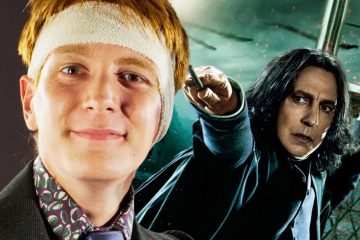Dune: Part Two is here, and that means book readers finally get to see how Dune director Denis Villeneuve recreated some of their favorite scenes from Frank Herbert’s 1965 novel: potentially seeing the whole story for the first time. The first film also included its share of key sequences, including the test given to Paul Atreides by the Reverend Mother Gaius Helen Mohiam. From the production design to the performances, the film really nails all the mysticism and dread that’s communicated so well in the book. But those unfamiliar with the source material might have a few questions, including the one Paul asks the Reverend Mother.As the movie illustrates, there are two parts to the Bene Gesserit’s ceremonial challenge. Paul must put his right hand inside what appears to be an empty box, and he must leave it there while the Reverend Mother holds a poisoned needle to his neck. If at any time he removes the hand, she’ll pierce him with the needle and he will die. And the weapon that the Reverend Mother points at him has a name: the Gom Jabbar. The box is just the box, but that doesn’t mean it’s just a box. Whoever puts their hand inside experiences increasingly unbearable pain, and it doesn’t cease until they fail the test and lose their life or until the Reverend Mother declares the experiment has gone far enough, which means they’ve passed.Herbert’s book goes into great detail about the use of the device, which the various movie and TV adaptations have faithfully included. The Gom Jabbar itself is just a poisoned needle, designed to cause instant death at the slightest prick. Other organizations use it besides the Bene Gesserit; most noble houses have their own version, and Paul’s sister Alia refers to herself as one when she kills Baron Harkonnen at the end of the first book. But the Bene Gesserit use it quite a bit, especially in conjunction with the pain box.
Dune: Part Two is here, and that means book readers finally get to see how Dune director Denis Villeneuve recreated some of their favorite scenes from Frank Herbert’s 1965 novel: potentially seeing the whole story for the first time. The first film also included its share of key sequences, including the test given to Paul Atreides by the Reverend Mother Gaius Helen Mohiam. From the production design to the performances, the film really nails all the mysticism and dread that’s communicated so well in the book. But those unfamiliar with the source material might have a few questions, including the one Paul asks the Reverend Mother.
As the movie illustrates, there are two parts to the Bene Gesserit’s ceremonial challenge. Paul must put his right hand inside what appears to be an empty box, and he must leave it there while the Reverend Mother holds a poisoned needle to his neck. If at any time he removes the hand, she’ll pierce him with the needle and he will die. And the weapon that the Reverend Mother points at him has a name: the Gom Jabbar. The box is just the box, but that doesn’t mean it’s just a box. Whoever puts their hand inside experiences increasingly unbearable pain, and it doesn’t cease until they fail the test and lose their life or until the Reverend Mother declares the experiment has gone far enough, which means they’ve passed.
Herbert’s book goes into great detail about the use of the device, which the various movie and TV adaptations have faithfully included. The Gom Jabbar itself is just a poisoned needle, designed to cause instant death at the slightest prick. Other organizations use it besides the Bene Gesserit; most noble houses have their own version, and Paul’s sister Alia refers to herself as one when she kills Baron Harkonnen at the end of the first book. But the Bene Gesserit use it quite a bit, especially in conjunction with the pain box.
#Dunes #Mysterious #Pain #Box #Work
Note:- (Not all news on the site expresses the point of view of the site, but we transmit this news automatically and translate it through programmatic technology on the site and not from a human editor. The content is auto-generated from a syndicated feed.))



